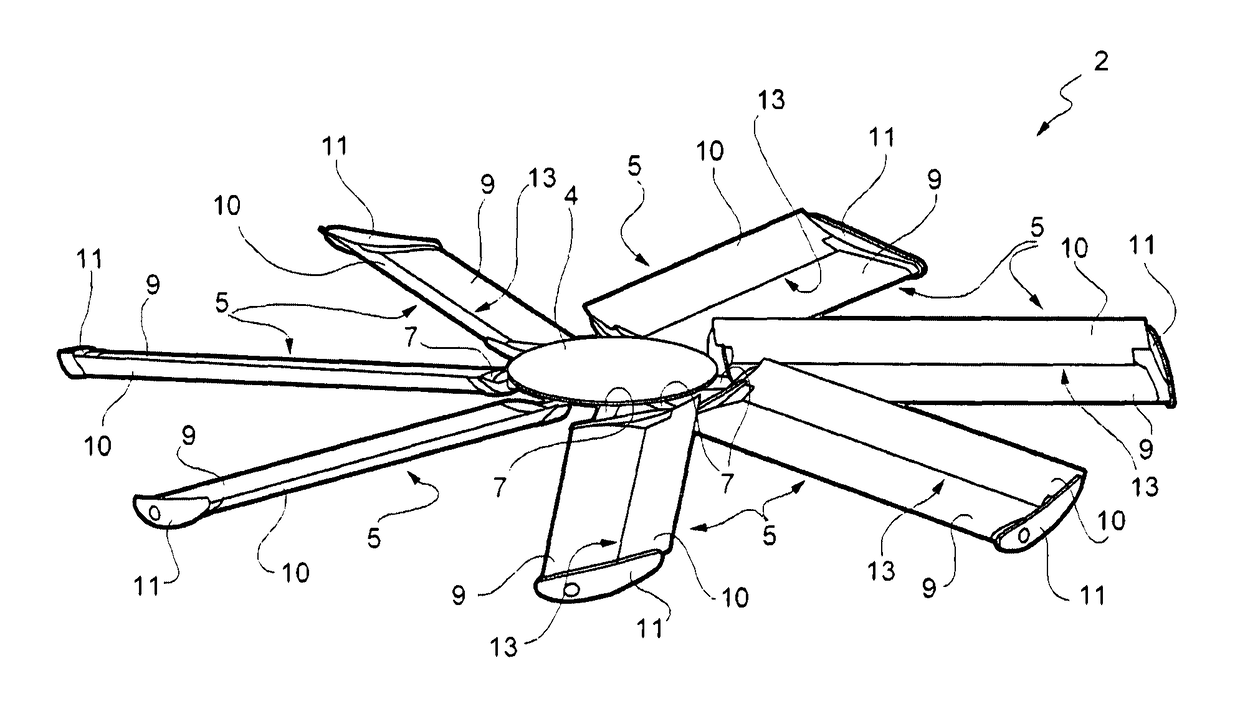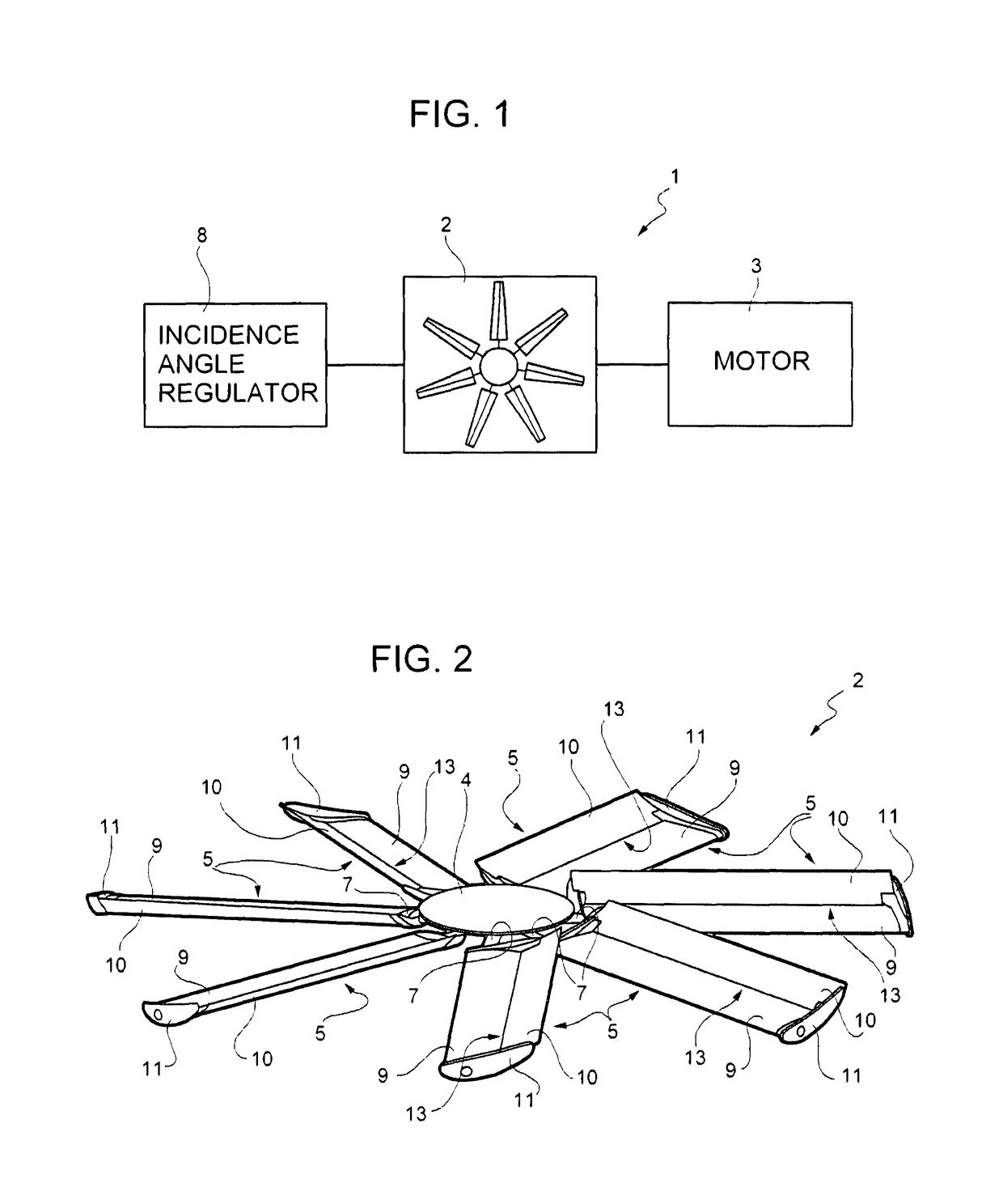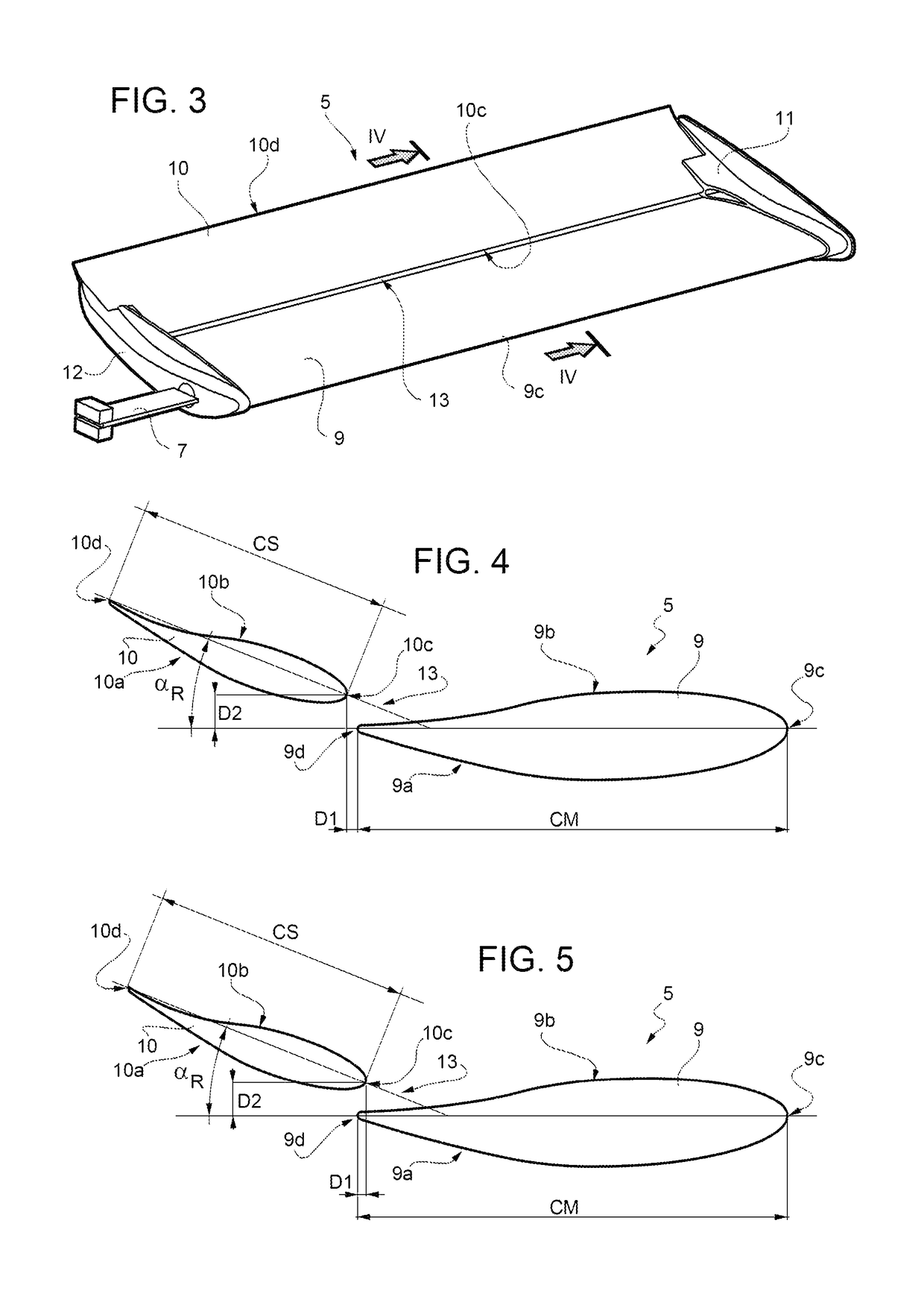Axial fan for industrial use
a technology for axial fans and industrial applications, applied in the direction of machines/engines, non-positive displacement fluid engines, liquid fuel engine components, etc., can solve the problems of reducing the efficiency of pitch angles and/or lower speeds, reducing the efficiency of blades designed to have high efficiency at low pitch angles and at low speeds, and reducing turbulence. , the effect of improving the aerodynamic efficiency of the blades
- Summary
- Abstract
- Description
- Claims
- Application Information
AI Technical Summary
Benefits of technology
Problems solved by technology
Method used
Image
Examples
Embodiment Construction
[0027]The invention described below is particularly suited for implementing axial fans of large dimensions, for example for heat exchangers used in plants for the liquefaction of natural gas, refineries or plants for the production of electricity in a combined cycle or with a steam turbine. In particular, the axial fans for industrial use have a diameter up to about 12 meters and rotation regimes that involve peripheral speeds of the blades up to about 75 m / s. Furthermore, for typical applications of axial industrial fans we must assume that the Reynolds number of the fluid processed, namely air, is greater than 10000.
[0028]With reference to FIG. 1, a fan assembly, indicated in its entirety with the number 1, comprises an axial fan 2 driven by an electric motor 3.
[0029]The axial fan 2, which is represented in more detail in FIG. 2, comprises a hub 4, connected to a shaft of the electric motor 3, and a plurality of blades 5 which extend from the hub 4 substantially in the radial dire...
PUM
 Login to View More
Login to View More Abstract
Description
Claims
Application Information
 Login to View More
Login to View More - R&D
- Intellectual Property
- Life Sciences
- Materials
- Tech Scout
- Unparalleled Data Quality
- Higher Quality Content
- 60% Fewer Hallucinations
Browse by: Latest US Patents, China's latest patents, Technical Efficacy Thesaurus, Application Domain, Technology Topic, Popular Technical Reports.
© 2025 PatSnap. All rights reserved.Legal|Privacy policy|Modern Slavery Act Transparency Statement|Sitemap|About US| Contact US: help@patsnap.com



